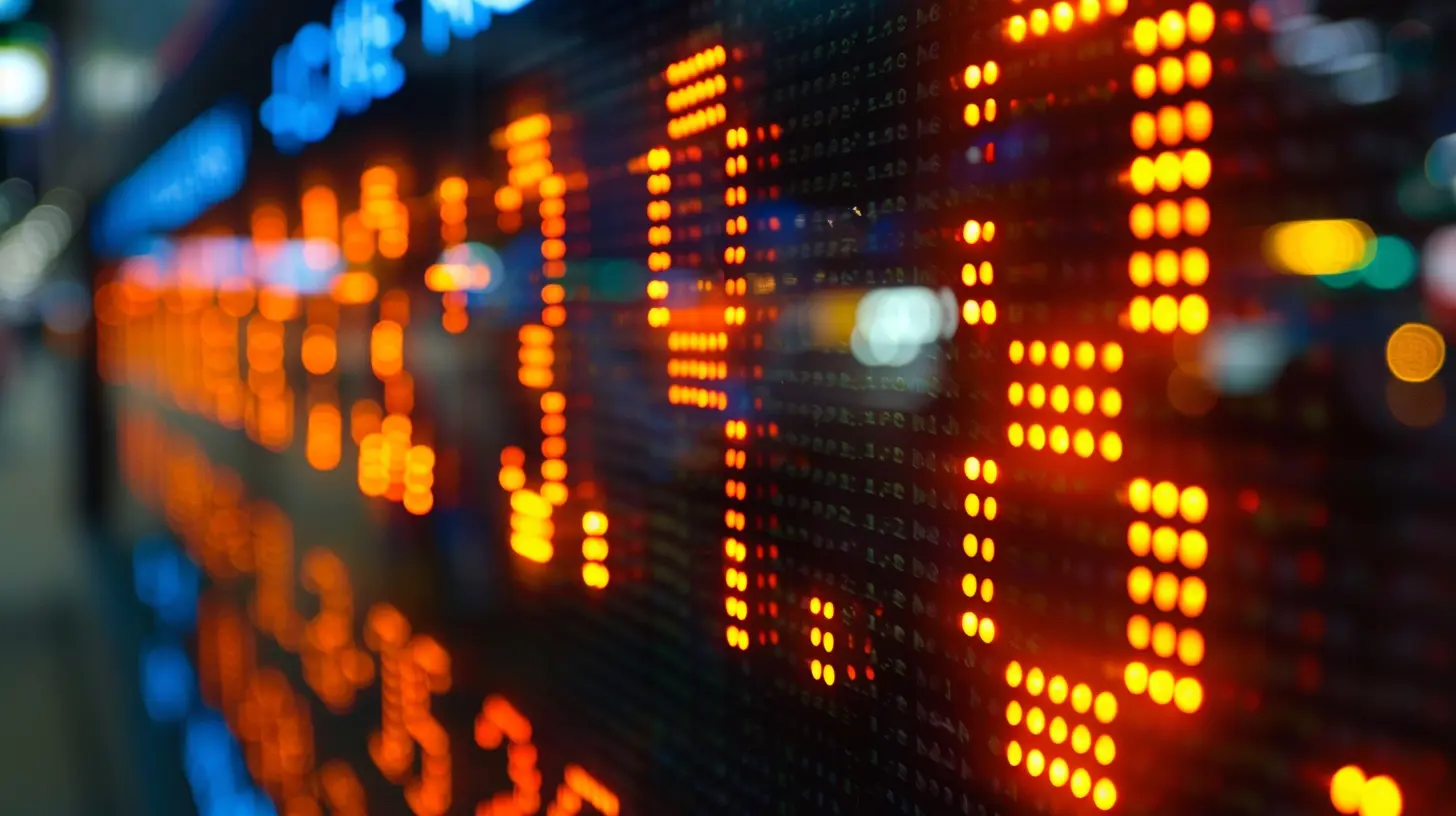Pros and Cons of High-Yield Dividend Stocks
14 April 2025
Investing in high-yield dividend stocks can seem like an appealing strategy, especially for those seeking passive income. Who doesn’t love the idea of earning money while doing absolutely nothing? These stocks offer the potential for regular cash payouts, making them particularly attractive for retirees and income-focused investors. But, as with anything in the investing world, high-yield dividend stocks come with both benefits and risks.
In this article, we’ll dive deep into the pros and cons of high-yield dividend stocks, helping you decide whether they deserve a spot in your portfolio. 
What Are High-Yield Dividend Stocks?
Let’s start with the basics. A high-yield dividend stock is a company that pays out a relatively large percentage of its earnings as dividends to shareholders. The dividend yield is calculated as follows:> Dividend Yield (%) = (Annual Dividend Per Share / Stock Price) × 100
Typically, a dividend yield above 4-5% is considered high. However, a high yield alone isn’t enough to judge whether an investment is good—it can sometimes be a red flag rather than a sign of financial strength.
Now, let’s break down the pros and cons of investing in these stocks. 
Pros of High-Yield Dividend Stocks
🏦 Steady Passive Income
One of the biggest perks of high-yield dividend stocks is the potential for consistent income. Unlike growth stocks, which reinvest earnings into expansion, these companies return a portion of their profits to shareholders.For retirees or anyone looking for passive income, this can be a lifesaver. Imagine getting paid every quarter just for holding onto your shares—sounds pretty sweet, right?
📈 Potential for Compound Growth
When you reinvest dividends through a Dividend Reinvestment Plan (DRIP), you can experience the magic of compound growth. Instead of spending your dividends, you use them to buy more shares, which in turn generate even more dividends. Over time, this can create a powerful snowball effect.🔐 Less Volatility
High-dividend stocks are often associated with blue-chip companies—established businesses with stable earnings. These companies tend to be less volatile compared to high-growth tech stocks, making them a potential safe haven during market downturns.For example, companies like Coca-Cola (KO) and Procter & Gamble (PG) have long histories of paying reliable dividends, making them attractive to conservative investors.
💰 Better Returns in Bear Markets
When the stock market takes a hit, high-dividend stocks can still provide returns through dividend payouts, even if share prices decline. This helps cushion your losses, providing a level of financial protection in uncertain times.Think of it this way: If the market crashes, you’re still getting paid. Compare that to non-dividend stocks, where your only hope is price recovery.
🏆 Dividend Aristocrats & Kings
Some high-yield dividend stocks belong to exclusive groups like the Dividend Aristocrats (stocks that have increased dividends for at least 25 consecutive years) or the Dividend Kings (stocks with 50+ years of increases). These companies have strong financials and a history of weathering economic storms while rewarding shareholders.Some examples include:
- Johnson & Johnson (JNJ)
- 3M (MMM)
- PepsiCo (PEP) 
Cons of High-Yield Dividend Stocks
⚠️ Dividend Cuts Are a Real Threat
Not all high-yield stocks are created equal. Sometimes, companies offering high yields do so because their stock price has plummeted—this is known as a dividend trap. If the company struggles financially, it may cut or eliminate dividends altogether.For example, energy companies often pay high dividends, but when oil prices crash, they’re among the first to slash payouts.
📉 Limited Growth Potential
Dividends come from company profits, but companies that prioritize high payouts often reinvest less in growth. This means they might lag behind in terms of innovation, expansion, or stock price appreciation.Take tech giants like Amazon (AMZN) or Alphabet (GOOGL)—they don’t pay dividends because they reinvest earnings into expanding their dominance. As a result, investors benefit from price appreciation rather than income.
🏛 Tax Implications
Dividend income isn't always tax-friendly. In some cases, investors may have to pay higher taxes on dividends, especially if they fall under the "ordinary income" bracket rather than the more favorable "qualified dividends" tax rate.If you're investing in a taxable brokerage account, be prepared to set aside a portion of your dividend income for Uncle Sam. However, if you hold these stocks in tax-advantaged accounts like an IRA or 401(k), you can minimize the tax bite.
🔄 Interest Rate Sensitivity
High-yield dividend stocks often behave like bonds, meaning they’re sensitive to changes in interest rates. When interest rates rise, investors may shift money away from dividend stocks into safer fixed-income assets like bonds or CDs, leading to a decline in stock prices.This can be especially concerning when the Federal Reserve hikes rates, making fixed-income alternatives more attractive.
⚡ Not All High-Yield Stocks Are Safe
A high yield can sometimes signal a struggling company rather than a great investment opportunity. If a stock's yield seems too good to be true, it might be. A company that pays out an unsustainable dividend payout ratio (over 80-90%) could be at risk of financial trouble.For example, if a company is paying out more than it earns, that's not sustainable in the long run. Always check a company's payout ratio before investing. 
Should You Invest in High-Yield Dividend Stocks?
Now that we’ve covered the pros and cons, should you add high-yield dividend stocks to your portfolio? Well, that depends on your investment goals.- If you're looking for steady income, high-yield dividend stocks can be a great choice.
- If you're focused on long-term growth, you might prefer reinvesting in growth stocks instead.
- If you want a balanced approach, you can mix dividend stocks with growth stocks for diversification.
The key takeaway? Not all high-yield stocks are good investments. Do your homework, check financials, and avoid dividend traps.
Final Thoughts
High-yield dividend stocks can provide a fantastic source of passive income, but they come with risks. While steady payouts and lower volatility make them attractive, the potential for dividend cuts, limited growth, and tax implications can’t be ignored.As always, a well-balanced portfolio is your best defense against market swings. Whether you're a retiree looking for income or a young investor aiming for long-term wealth, understanding both the benefits and risks of high-yield dividend stocks is crucial before making any investment decisions.
What do you think? Are high-yield dividend stocks worth the risk? Let’s hear your thoughts!
all images in this post were generated using AI tools
Category:
Dividend InvestingAuthor:

Audrey Bellamy
Discussion
rate this article
6 comments
Virginia Morales
High-yield dividend stocks can offer great income, but beware of potential risks and volatility in the underlying investments.
May 11, 2025 at 3:12 AM

Audrey Bellamy
Absolutely, while high-yield dividend stocks can provide attractive income, it's crucial to carefully assess the risks and market volatility they may entail. Balance is key!
Seraphine McCord
Investing in high-yield dividend stocks can be a rewarding journey! With careful research, you can unlock financial growth while enjoying passive income. Stay informed and inspired!
April 24, 2025 at 10:50 AM

Audrey Bellamy
Thank you for your insight! Indeed, with proper research, high-yield dividend stocks can offer both financial growth and passive income.
Zelda Young
High-yield dividend stocks can provide attractive income but come with risks. It's essential to balance yield with company stability and market conditions.
April 21, 2025 at 11:18 AM

Audrey Bellamy
Absolutely! While high-yield dividend stocks can offer appealing income, it's crucial to assess both the company's stability and prevailing market conditions to mitigate potential risks.
Nicole Lewis
Great article! High-yield dividend stocks can be an exciting investment opportunity. Your insights on the pros and cons are truly valuable. Thank you!
April 20, 2025 at 4:28 AM

Audrey Bellamy
Thank you for your kind words! I'm glad you found the insights valuable. Happy investing!
Diesel Fuller
This article raises fascinating points about high-yield dividend stocks! I’m curious—how do the risks compare to potential rewards, especially in volatile markets? Are there specific strategies for balancing income and risk in such investments?
April 19, 2025 at 2:17 AM

Audrey Bellamy
Thank you for your insightful comment! While high-yield dividend stocks can offer attractive income, they do come with risks, particularly in volatile markets. It's essential to diversify your portfolio, focus on companies with strong fundamentals, and consider using options strategies to hedge risks while maximizing income.
Adria Lee
High-yield dividend stocks can provide attractive income, appealing to investors seeking cash flow. However, potential drawbacks include increased volatility and the risk of dividend cuts during economic downturns. It's essential for investors to weigh these factors carefully against their overall investment strategy and risk tolerance.
April 14, 2025 at 11:11 AM

Audrey Bellamy
Great summary! Balancing the allure of high yields with the associated risks is crucial for informed investing.
MORE POSTS

Estate Planning in a Digital World: Why It’s Time to Think About Your Online Presence

Stop Chasing More: The Benefits of Financial Contentment

How to Start Earning Money from Affiliate Marketing with a Passive Approach

How to Prepare for Retirement in a Changing Economy

What You Need to Know About Stablecoins